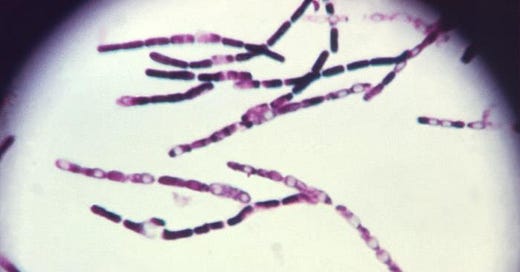Anthrax outbreak in North Kivu, the Democratic Republic of the Congo
Wild animal cases also reported
Health officials report in early June, an outbreak of cutaneous anthrax with 10 confirmed cases and 2 deaths (20% CFR) among butchers from four public abattoirs, or slaughterhouses in North Kivu province.
Investigators say the butchers presented with skin lesions around the neck, jaw and arms. Samples collected tested positive for Bacillus anthracis, the agent of anthrax.
In addition, samples collected from cattle in some of the abattoirs also tested positive for anthrax.
Additionally, 15 animal cases from Virunga National Park in North Kivu were reported- one water buffalo and 14 hippopotamus with 100% mortality.
The hippo carcasses were observed lining the banks of the Lulimbi river.

The MOH continues to enhance surveillance, risk communication, environmental sanitation and safe burial of dead animals, as well as strengthen animal vaccination against anthrax.
Additionally, the population was advised to avoid drinking water from the river and picking up any dead domestic or wild animals.
Anthrax is a bacterial pathogen in livestock and wild animals. It is a very serious disease of livestock because it can potentially cause the rapid loss of a large number of animals in a very short time. Affected animals are often found dead with no illness detected.
When conditions become favorable, the spores germinate into colonies of bacteria. An example would be a grazing cow ingests spores that in the cow, germinate, grow spread and eventually kill the animal.
Anthrax is caused by the bacterium, Bacillus anthracis. This spore-forming bacteria can survive in the environment for decades because of its ability to resist heat, cold, drying, etc. This is usually the infectious stage of anthrax.
Subscribe to Outbreak News TV on YouTube
There are no reports of person-to-person transmission of anthrax. People get anthrax by handling contaminated animal or animal products, consuming undercooked meat of infected animals and more recently, intentional release of spores.
There are three types of human anthrax with differing degrees of seriousness: cutaneous, gastrointestinal and inhalation.
Cutaneous anthrax occurs when the spore (or possibly the bacterium) enters a cut or abrasion on the skin. It starts out as a raised bump that looks like an insect bite. It then develops into a blackened lesion called an eschar that may form a scab. Lymph glands in the area may swell plus edema may be present. This form of anthrax responds well to antibiotics. If untreated, deaths can occur if the infection goes systemic. 95% of cases of anthrax are cutaneous.





